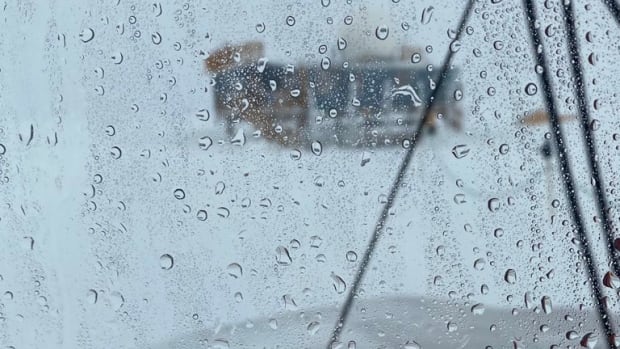For the first time on record, rain has been recorded on the summit of Greenland — a location where precipitation has previously always fallen as snow or ice.
“There is no previous report of rainfall at this location (72.58°N 38.46°W), which reaches 3,215 metres in elevation,” reported the U.S. National Snow and Ice Data Center (NSIDC) of the Aug. 14 event.
“It’s objectively a big deal. It’s unprecedented,” said William Colgan, a senior researcher with the Geological Survey of Denmark and Greenland, which runs one of three weather stations on the summit.
On August 14, 2021, temperatures rose above freezing on the summit of Greenland for only the third time this decade. But for the first time on record, rain fell at @NSF Summit Station. Read the full Greenland Today report: https://t.co/dVzhYSgefm pic.twitter.com/ctyMMILn9e
The rain began at 5 a.m. local time (3 a.m. ET) that morning, and was photographed by Alicia Bradley, the science technician at the National Science Foundation Summit Station, an hour later.
She and Zoe Courville, a polar engineer and snow scientist, were credited with the observation.
The science tech up at Summit did make direct observations of rain on August 14. I can give you more details! ?: Alicia Bradley, NSF. 6am, rain observed. pic.twitter.com/hGnFvRm0yT
Temperatures peaked at 0.48 C at 8:40 a.m. local time.
It’s only the fourth time the temperature has been recorded above freezing at that location. But in the previous instances in 1995, 2012 and 2019, there was no rain. Before that, the last record of above-freezing temperatures, based on ice cores, was in the 1880s.
Colgan, a Canadian who recently published a study on rainfall on the Greenland Ice Sheet, said getting rain in that region requires a lot of warm, moist air to be pushed up from lower latitudes.
“That is happening more frequently with climate change, and it’s bad for the ice sheet,” he said.
Rain, which carries a lot of heat energy, triggers a lot of melting, he added. “It can really make the snowpack warmer and more susceptible to future warming.”
Why we don’t know how much rain fell
Up until recently, rain wasn’t seen at high elevations in Greenland. In fact, the GSDG has only just started installing rain gauges at its weather stations there, Colgan said. The project was slowed down by the pandemic, so only 30 per cent of them have been installed so far, prioritized based on likelihood of rain.
That means there are no direct measurements of how much rain fell on the summit.
“We didn’t think we would already be getting rain on the on the summit this year,” he said.
As might be expected, the recent rain on the summit was accompanied by a massive ice melt of 872,000 square kilometres on Aug. 14.
Only one other year, 2012, has had multiple melts over 800,000 square kilometres, and this is the latest in the year it has ever occurred, the NSIDC said.
With all the interest in this weekend’s rain event up at @NSF Summit Station (first observed rain at the location), I want to give a shout out to phenomonal science tech, Alicia Bradley, who made 12 hours of weather observations, in the rain! Photo: Alicia. Rain Dimples on Snow. pic.twitter.com/1BsSTQIk9s
Ice melts can lead to flooding
That led to massive loss of surface mass from Greenland’s ice sheet — seven times higher than the mid-August average.
“At this point in the season, large areas of bare ice exist along much of the southwestern and northern coastal areas, with no ability to absorb the melt or rainfall,” the report noted. “Therefore, the accumulated water on the surface flows downhill and eventually into the ocean.”
Melting ice sheets in Greenland and Antarctica are expected to be the main contributors to sea level rise — an impact of climate change that can lead to dangerous and costly coastal flooding worldwide.
Studies in 2020 found the rate of melt matched the UN’s Intergovernmental Panel on Climate Change’s worst-case climate warming scenario, and Greenland’s ice cap is melting faster than it has in 12,000 years.
The melt in Greenland and Antarctica could also have a major and underestimated impact on extreme weather in Canada, a 2019 study found.


